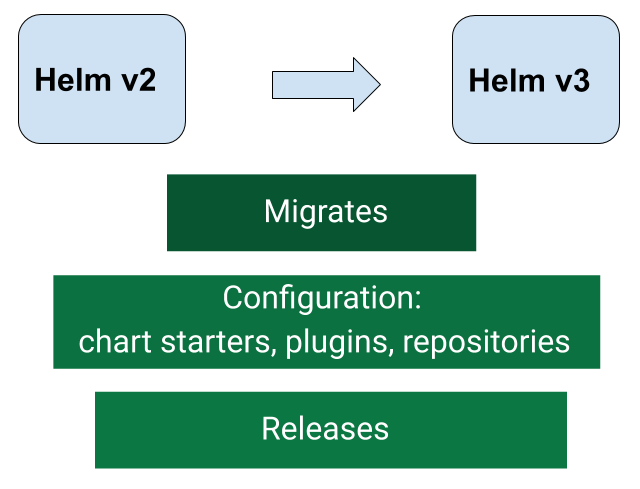Helm at KubeCon + CloudNativeCon NA 2019
Next week is the annual KubeCon and CloudNativeCon in North America. The Helm project and maintainers have several things going on and we wanted to invite you to them.
Next week is the annual KubeCon and CloudNativeCon in North America. The Helm project and maintainers have several things going on and we wanted to invite you to them.
The Helm Team is proud to announce the first stable release of Helm 3.
Helm 3 is the latest major release of the CLI tool. Helm 3 builds upon the success of Helm 2, continuing to meet the needs of the evolving ecosystem.
Devstats and stats on GitHub are able to capture many different types of contributions to an open source project. But there is one type of contribution for which we have yet to figure out a good metric, and it has been essential for Helm's success. That is community management.
Karen Chu has handled community management for Helm since the project was first announced at the inaugural KubeCon in San Francisco. Her work ranges from big things, like planning and executing two Helm Summits, down to smaller (but still essential) things like managing the Helm twitter account.
Today, the Helm Maintainers are proud to announce that we have successfully completed a 3rd party security audit for Helm 3. Helm has been recommended for public deployment.
A security audit is part of the graduation criteria for CNCF projects. Specifically, the graduation criteria says:
Have completed an independent and third party security audit with results published of similar scope and quality as the following example (including critical vulnerabilities addressed): https://github.com/envoyproxy/envoy#security-audit and all critical vulnerabilities need to be addressed before graduation.
Part of the process for Helm to become a graduated CNCF project is to complete an independent and third party security audit with the results being published. As part of the audit of Helm 3 a security issue was found that also impacts Helm v2. Cure53 performed the audit and found the issue. More about the audit will be covered in a future post.
The vulnerability found impacts all versions of Helm between Helm >=2.0.0 and < 2.15.2. Helm commands that deal with loading a chart as a directory or packaging a chart provide an opportunity for a maliciously designed chart to include content not intended in the chart or to execute a denial of service (DOS) on the computer performing the packaging via the use of symlinks.
Helm 2.15.0 was released last week. The 2.15.0 release of Helm introduces several improvements to helm test. Several commands - helm search, helm repo list, and helm install - received the --output flag for machine-readable output.
In addition to these new features (and many more!), many bugs and edge cases in Helm continue to fixed by members of the community. Several parts of the codebase have been refactored for easier maintainability, usability, and better testing.
As Helm moves towards Helm 3's first release, Helm 2 is now transitioning into "maintenance mode". Helm 2.15.0 will be the final feature release for Helm 2.

One of the most important parts of upgrading to a new major release of Helm is the migration of data. This is especially true of Helm v2 to v3 considering the architectural changes between the releases. This is where the helm-2to3 plugin comes in.
Helm v3 development has hit a new milestone with the release of the first beta. This is an especially important milestone because it is the end of the effort to refactor Helm v3. The last of the intended breaking changes has landed. From this point on, Helm v3 is focused on bug fixes, stability, and preparing it for a stable release.
If you are interested in Helm v3 now is a great time to test it out. If you find issues please file an issue if one has not already been filed.
The Helm Client has long been available to download from Google Cloud Storage at the bucket https://kubernetes-helm.storage.googleapis.com. This bucket in Google Cloud has been used by Helm since before Kubernetes was part of the CNCF. The first release hosted on this bucket was Helm v2.0.0-alpha.5!
Google has long been gracious in providing funding for this location. Since Helm started using it, Helm (as part of Kubernetes) moved into the CNCF, and then moved out from under the Kubernetes umbrella, becoming a sister project to Kubernetes within the CNCF.
This is the seventh and final part of our Helm 3 Preview: Charting Our Future blog series. Read our previous blog post on library charts here.
Helm 3.0.0-alpha.1 is the foundation upon which we'll begin to build the next version of Helm. The features shared over the last few weeks were some of the big promises we made for Helm 3. Many of those features are still in their early stages and that is OK; the idea of an alpha release is to test out an idea, gather feedback from early adopters, and validate those assumptions.